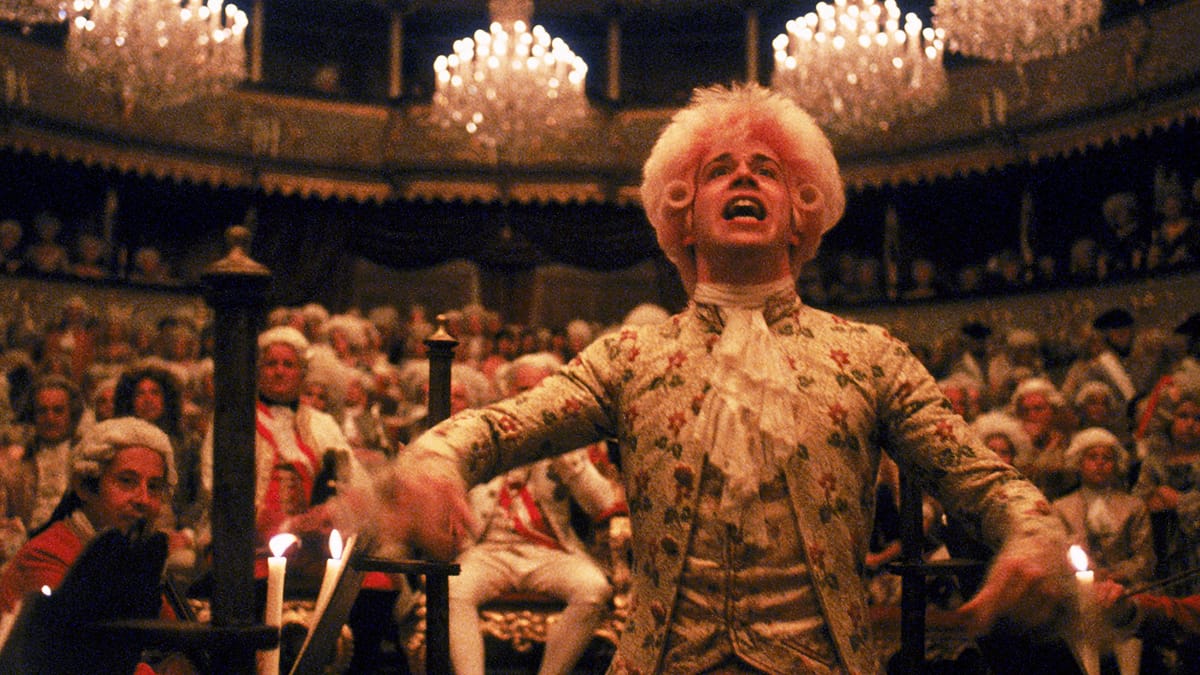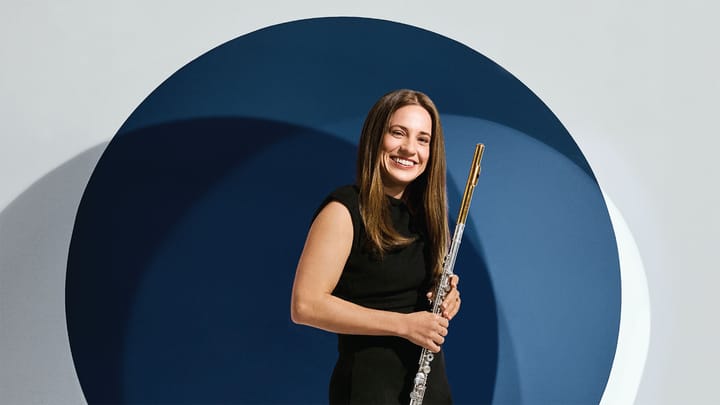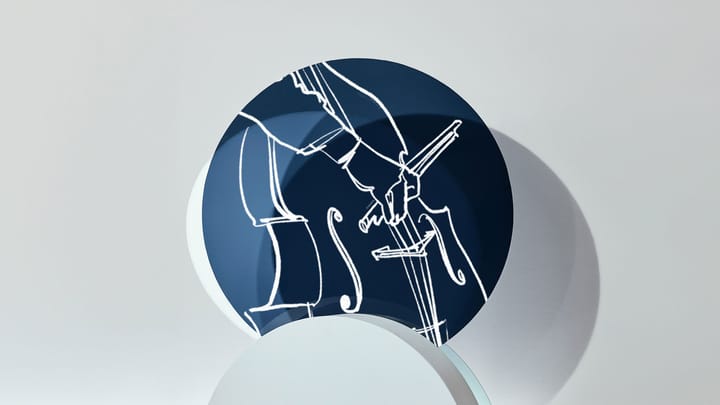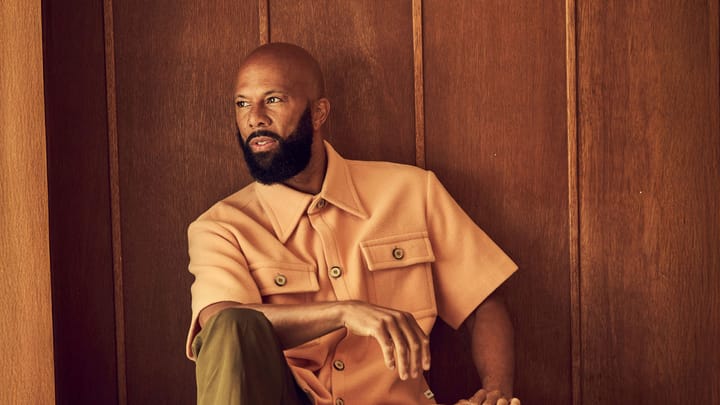In This Program
The Concert
Friday, November 29, 2024, at 7:30pm
Saturday, November 30, 2024, at 7:30pm
Constantine Kitsopoulos conducting
John Wilson piano
San Francisco Symphony
San Francisco Symphony Chorus
Kevin Fox guest director
The Saul Zaentz Company presents
A Miloš Forman Film

F. Murray Abraham
Tom Hulce
Elizabeth Berridge
Simon Callow
Roy Dotrice
Christine Ebersole
Jeffrey Jones
Charles Kay
Director of Photography Miroslav Ondříček
Film Score Recording Conducted and Supervised by Neville Marriner
Production Design by Patrizia Von Brandenstein
Choreographer Twyla Tharp
Screenplay and Original Stage Play by Peter Shaffer
Produced by Saul Zaentz
Directed by Miloš Forman
There will be one intermission.
Rated PG.


The November 29 concert is presented in partnership with

Concert Sponsor

Esa-Pekka Salonen and the Board of Governors of the San Francisco Symphony gratefully acknowledge the support of San Francisco Arts Commission.
In founding the San Francisco Symphony in 1911, San Francisco’s civic leaders sought to create a permanent orchestra in our music-loving city. For more than 85 years, the San Francisco Symphony has partnered with the San Francisco Arts Commission to enrich and serve its vibrant community through music. The partnership dates back to 1935, when President Franklin Delano Roosevelt encouraged all cities to support local symphonies believing that music was good for the soul of the people. San Franciscans followed suit and passed an historic charter amendment allocating funds to support the Symphony.
Through this mutually beneficial partnership, the Arts Commission funding contributes to the Symphony’s community programs, supports concerts such as Día de los Muertos and Lunar New Year, and helps bring a broad audience to experience its music and programs. This partnership also enables the Arts Commission to distribute funds to support and strengthen cultural equity throughout the city.
The San Francisco Symphony is honored to partner with the San Francisco Arts Commission to continue its work as San Francisco’s orchestra.
Program Notes
“Forgive me, Majesty. I am a vulgar man! But I assure you, my music is not.”
Amadeus attempted nothing less than the depiction of musical genius—and it succeeded wildly. Milos Forman’s 1984 film, based on the Tony-winning play by Peter Shaffer, gobbled up the box office and the Academy Awards, and inspired a mini-renaissance for the music of Mozart: Its soundtrack album sold more than 6.5 million copies and broke into Billboard’s popular albums chart. The film cleverly painted a portrait of the classical composer icon in a way that irreverently humanized him—as a carousing, pink-wigged glam rocker of his day—while simultaneously letting his music exalt him as practically divine.
Shaffer, who previously won a Tony for Equus, based his stage play on an 1830 Russian play in which Antonio Salieri murders Mozart. Shaffer did his homework, drawing anecdotes of the composer’s juvenile side from letters to his cousin, but was forthright that Amadeus was never meant to be strict biography. He called it a “fantasia on the theme of Mozart and Salieri,” and as it permuted from the London stage to Broadway and then to the silver screen, it evolved further away from factual accuracy and toward an examination of a boorish man-child “touched by God” through the eyes of a fiendishly jealous rival. Forman (who had directed One Flew Over the Cuckoo’s Nest and Hair) deconstructed the play with Shaffer, and cast it with American faces: Tom Hulce as the giggling, hedonistic prodigy and F. Murray Abraham in an Oscar-winning performance as the enlightened, eloquent “mediocrity” Salieri. The film was shot in Forman’s native Czechoslovakia, which in 1984 could still pass for eighteenth century Vienna. The elaborate staging of Don Giovanni was shot in the Tyl Theatre in Prague, where Mozart premiered the opera in 1787.
Hulce undertook a month of intense piano lessons in order to perform naturally on screen—at one point even upside down—and the filmmakers took great pains to achieve detail in authentic costuming, production design, and choreography even as they cut corners on historical veracity. Perhaps the most painstaking authenticity was in the music itself, adapted for the film by Sir Neville Marriner (and originally performed by the Academy of St Martin in the Fields, with additional contributions from the San Francisco Symphony Chorus). Mozart’s work was treated with the utmost care—scenes were cut to the music rather than the other way around—and thanks to the more transcendent nature of cinema, it took on a more powerful role. “In the theater,” Shaffer told the New York Times, “if you play music a lot, it turns into a concert. But film welcomes music, it eats it up. In this case, it's not background music; it’s not there to heighten atmosphere, to heighten grief or joy or any obvious emotion. In the film of Amadeus, music almost becomes a character, the most important character.”
The Amadeus soundtrack, with the exception of some Salieri and the stray folk tune, is entirely made up of Mozart. It acts variously as emotional underscore, diegetic music played within the world of the film, or as a portal inside the mind of the composer—often weaving between all three in the same scene. There are straightforward performances of The Magic Flute and Don Giovanni, but the thunderous chords that open the latter are also used as a recurring motif in the score, signifying the specter of Mozart’s displeased father, Leopold, and the composer’s own fate. Mozart plays or conducts music within the story in ways that both demonstrate his mischievous personality—embellishing on Salieri’s simplistic court music and turning it into Figaro’s march—and highlight the dichotomy between his immature demeanor and mature musical gift. After we’re introduced to “Wolfie” chasing his beloved Constanze on all fours, tricking her into making scatalogical statements, his elegant Serenade No. 10, Gran Partitacommences next door. “That giggling, dirty-minded creature I had just seen. . . that was Mozart,” marvels Salieri, encapsulating the heart of the film’s drama.
Salieri recognizes the “miraculous” talent in this man he despises, and the film cleverly puts us inside his envious head. When Constanze sneaks over to the court composer’s house with a stack of her husband’s scores, Salieri leafs through them and the soundtrack translates what he hears—the pastoral Concerto for Flute and Harp, the balletic Symphony No. 29, the sprightly Concerto for Two Pianos, the bustling Symphonie concertante, and the dark but heavenly Kyrie from his Mass in C minor. Salieri is confounded that such brilliance could pour out in unedited first drafts “like dictation,” but he is in ecstasy as he listens to them with his imagination.
The film famously concludes with Mozart dictating his Requiem in D minor to Salieri, who hungrily snatches the melodies as they fly out of the weakening creator’s mouth. The soundtrack brings it all to life in isolated fragments as these two nerdy composers speak their secret language—basking in the euphoria of heavenly music that exists only inside their heads.—Tim Greiving
Playwright Peter Shaffer observed, “In the film of Amadeus, music becomes a character, the most important character.”
About the Artists
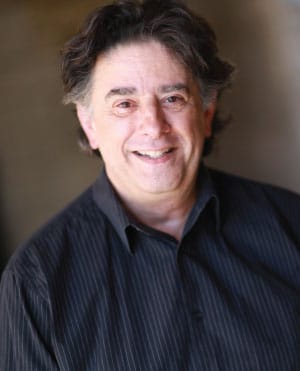
Constantine Kitsopoulos
A dynamic conductor known for his ability to work in many different genres and settings, Constantine Kitsopoulos is equally at home with opera, symphonic repertoire, film with live orchestra, musical theater, and composition. He is music director of the Festival of the Arts Boca, general director of Chatham Opera, and general director of the New York Grand Opera.
In recent seasons, Kitsopoulos has conducted the Philadelphia Orchestra, New York Philharmonic, Chicago Symphony, Dallas Symphony, Houston Symphony, Detroit Symphony, New Jersey Symphony, Toronto Symphony, and Vancouver Symphony. He made his San Francisco Symphony debut in 2007.
Kitsopoulos has developed semi-staged productions of The Magic Flute (for which he has written a new translation), Don Giovanni, and La bohème. He has conducted productions of Falstaff, Die Fledermaus, A View from the Bridge, H.M.S. Pinafore, South Pacific, Oklahoma!, The Music Man, and The Last Savage. On Broadway, he has been music director for many successful productions and cast recordings.
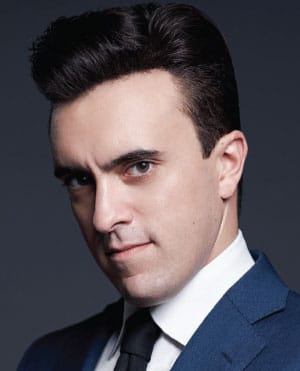
John Wilson
John Wilson frequently performs as a pianist with the San Francisco Symphony and serves as principal keyboard for the Marin Symphony, San Diego Symphony, and Oakland Symphony. This season he appears at Carnegie Hall, at the San Francisco Conservatory of Music, and on the SF Symphony’s Chamber Music Series. He performs Beethoven’s Choral Fantasy with the Berkeley Community Chorus and Orchestra and Grieg’s Piano Concerto with the Marin Symphony.
His accolades include first prizes in the 2019 International Respighi Prize Competition and the 2021 American Competition, as well as the 2023 Ernst Bacon Memorial Award for the Performance of American Music. A passionate advocate for contemporary music, Wilson has premiered works by Michael Tilson Thomas, John Adams, Timo Andres, and Steve Reich.
Wilson performed on the Grammy Award–winning recording of Michael Tilson Thomas’s Meditations on Rilke as well as on the recent release of Grace: The Music of Michael Tilson Thomas on Pentatone. His 2022 solo debut album on Avie Records featured the world premiere of MTT’s Upon Further Reflection.
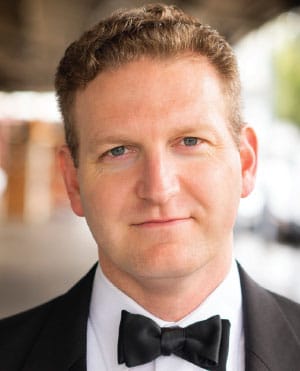
Kevin Fox
Kevin Fox is the conductor of the Marin Symphony Chorus and as founding artistic director of Pacific Boychoir has collaborated with the San Francisco Symphony on dozens of projects since 2002, including Grammy Award–winning recordings of Mahler’s Third and Eighth symphonies.
Fox has prepared choirs for conductors Michael Tilson Thomas, Gustavo Dudamel, and James Conlon, as well as for the United Nations, Yahoo!, Zach Galifianakis, and America’s Got Talent. He has collaborated with the Kronos Quartet, Dmitri Hvorostovky, and cellist Zöe Keating, and served as chorus director for the Ojai Festival and UC Davis University Chorus. He was selected as Classical Movements’ inaugural India Choral Fellow and was awarded “Heritage Keeper” status from the Friends of Negro Spirituals. He holds degrees in music and economics from Wesleyan University and has also studied music at Oxford University and Westminster Choir College.
San Francisco Symphony Chorus
SOPRANOS
Elaine Abigail
Adeliz Araiza
Naheed Attari
Morgan Balfour*
Helen J. Burns
Laura Canavan
Sarita Nyasha Cannon
Sarah Chalk
Phoebe Chee*
Mun-Wai Chung
Francielle De Barros
Tonia D’Amelio*
Amy Foote*
Tiffany Gao
Julia Hall
Betsy Johnsmiller
Anna Keyta*
Elizabeth Kimble*
Jocelyn Queen Lambert
Jennifer Mitchell*
Laura Stanfield Prichard
Bethany R. Procopio
Shroothi P. Ramesh
Sigrid Van Bladel
Lauren Wilbanks
Helene Zindarsian*
ALTOS
Carolyn Alexander
Terry A. Alvord*
Christina E. F. Barbaro
Melissa Butcher
Carol Copperud
Sara Couden*
Nicole Daamen
Corty Fengler
Stacey L. Helley
Amy L. Hespenheide
Emily (Yixuan) Huang
Hilary Jenson
Gretchen Klein
Margaret (Peg) Lisi*
Brielle Marina Neilson*
Tiffany Ou-Ponticelli
Leandra Ramm*
Linda J. Randall
Meredith Riekse
Jeanne Schoch
Kathryn Schumacher
Kyle S. Tingzon*
Mayo Tsuzuki
Merilyn Telle Vaughn*
Heidi L. Waterman*
Hannah J. Wolf
TENORS
Paul Angelo
Carl A. Boe
Alexander P. Bonner
Todd Bradley
Dean Christman
Thomas L. Ellison
Elliott JG Encarnación*
Sam Faustine*
Kevin Gibbs*
Edward Im
Alec Jeong
Drew Kravin
James Lee
Benjamin Liupaogo*
Joachim Luis*
David Kurtenbach Rivera*
Darita Seth*
Tetsuya Taura
John A. Vlahides
Jack Wilkins*
Jakob Zwiener
BASSES
Matthew Ahn
Simon Barrad*
Phil Buonadonna
Robert Calvert
Joseph Calzada*
Adam Cole*
Noam Cook
James Radcliffe Cowing III
Rick Galbreath
Richard M. Glendening
Bradley A. Irving
Tim Marson
Julian Nesbitt
Chengrui Pan
Jess Green Perry
Matthew C. Peterson*
Michael Prichard
Mark E. Rubin
Chung-Wai Soong*
Michael Taylor*
Connor Tench
David Varnum*
Julia Vetter
Nick Volkert*
Goangshiuan Shawn Ying
Kevin Fox
Guest Chorus Director
John Wilson
Rehearsal Accompanist
*Member of the American Guild of Musical Artists
San Francisco Symphony Chorus
The San Francisco Symphony Chorus was established in 1973 at the request of Seiji Ozawa, then the Symphony’s Music Director. The Chorus, numbering 32 professional and more than 120 volunteer members, now performs more than 26 concerts each season. Louis Magor served as the Chorus’s director during its first decade. In 1982 Margaret Hillis assumed the ensemble’s leadership, and the following year Vance George was named Chorus Director, serving through 2005–06. Ragnar Bohlin concluded his tenure as Chorus Director in 2021, a post he had held since 2007. Jenny Wong was named Chorus Director in September 2023.
The Chorus can be heard on many acclaimed San Francisco Symphony recordings and has received Grammy Awards for Best Performance of a Choral Work (for Orff’s Carmina burana, Brahms’s German Requiem, and Mahler’s Symphony No. 8) and Best Classical Album (for a Stravinsky collection and for Mahler’s Symphony No. 3 and Symphony No. 8). The Chorus can be heard on the soundtracks of the films Amadeus, The Unbearable Lightness of Being, The Godfather Part III, and on the DVD release of the Emmy-winning Sweeney Todd with the San Francisco Symphony.

